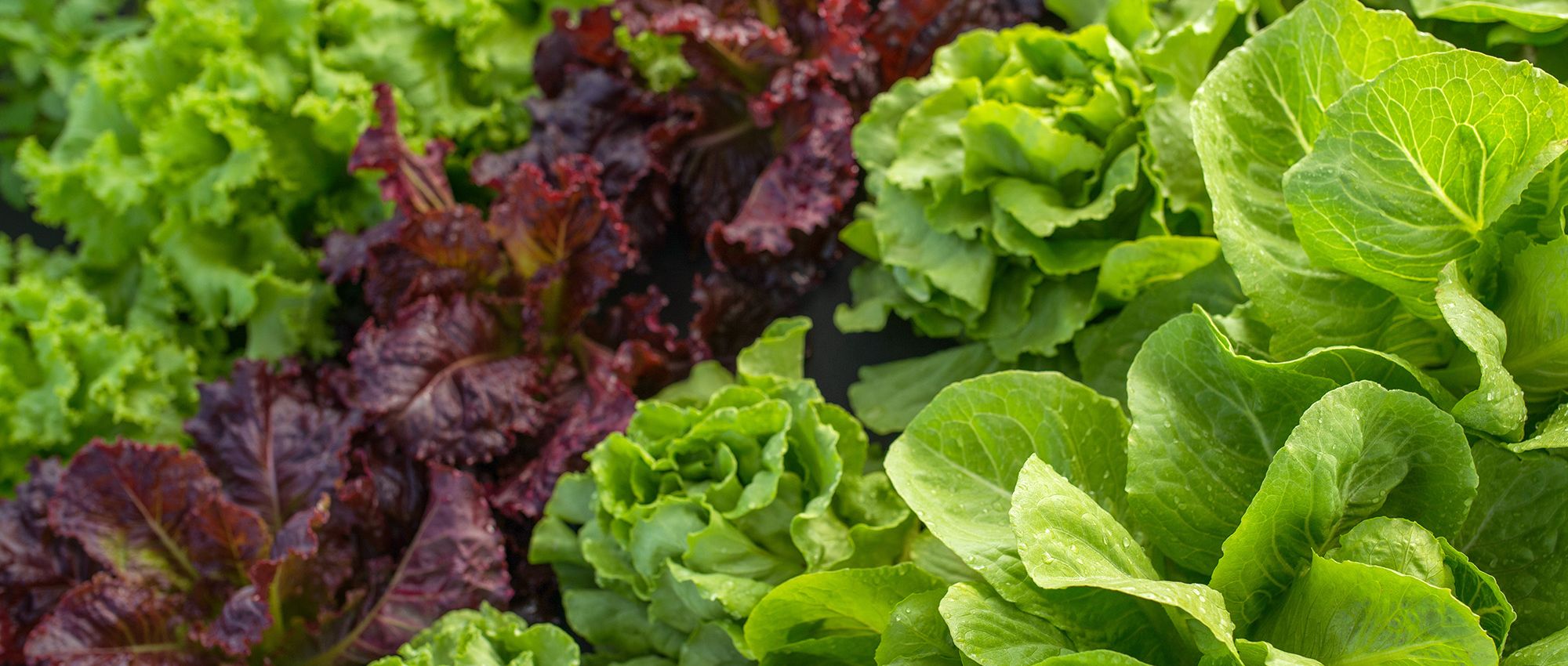
Lettuce, the vegetable garden staple
Today, we are talking about lettuce, a staple in the vegetable garden and on the plate that helps break up the monotony of our meals with assorted salads made with romaine lettuce or iceberg, oak leaf, trocadero, red or green batavia and lollo rosso, to name but a few.
As with virtually every other crop, its origins are unclear, although some authors claim that it hails from India. Lettuce cultivation dates back 2,500 years and was known to both the Greeks and the Romans. The earliest references to lettuces refer to loose-leaf varieties, although head lettuces were common in sixteenth-century Europe.
Morphology
Lettuce is an annual, self-pollinating plant belonging to the Compositae family, with the botanical name Lactuca sativa L.
- Leaves: arranged in rosette, initially open; some stay like this throughout their development (romaine varieties), while others later form a head. The edge of the leaf blades can be smooth, wavy or serrated.
- Stem: cylindrical and branched.
- Root: short taproot with lateral roots that never grows deeper than 25 cm.
- Seeds: with a feathery pappus.
- Inflorescence: yellow flower heads arranged in clusters or corymbs.
Varieties
We can find the following varieties of lettuce, classified into botanical groups:
-Head: these lettuces have a tight head of leaves.
- Batavia
- Butterhead or Trocadero
- Iceberg
-Romaine: oblong leaves that do not form a compact head, with smooth edges and a wide midrib.
- Romaine
- Baby
-Loose leaf: lettuces with loosely arranged leaves.
- Lollo Rosso
- Red Salad Bowl
- Cracarelle
– Celtuce: this type is grown for its stems; the leaves are lanceolate and pointed. It is grown mainly in China and India.
Climate
Lettuce is not restricted to any given climate, since it provides good yields in almost all of them. Lettuce can withstand temperatures from 30ºC to -6ºC, but stops growing below 6ºC. In cooler climates, it is usually covered with plastic for protection from overly harsh conditions and to boost results. Different lettuce varieties are available all year round.
Irrigation
Waterlogging must be avoided at all costs (as this will lead to neck rot). We can do this with short but frequent waterings, keeping the humidity level as stable as possible. Drip and exudation irrigation systems are recommended for this crop because they ensure a constant flow without waterlogging problems (except if there are leaks).
With regard to relative humidity, lettuce has a very small root system in comparison to its aerial part, so it is very sensitive to humidity shortages and does not tolerate dry spells.
A suitable relative humidity for lettuce is 60–80%. As a greenhouse crop, lettuce has the problem that it requires increased environmental humidity, so the recommendation is to grow it outdoors, weather conditions permitting.
Soil
As stated, lettuce cannot tolerate drought in any form, although the soil surface should be dry to avoid neck rot where possible.
The recommended soils for lettuce are light, sandy and silty, with good drainage and a pH of 6.7–7.4.
Lettuce usually gives a good result in humiferous soils, but liming will be required if these are too acidic.
In the spring, sandy soils are recommended as they warm up easily and allow for earlier harvests.
In the autumn, loamy soils are preferred as they cool slower than sandy soils.
And for summer crops, soils rich in organic matter are recommended because the water resources can be put to better use and the plants grow faster.
Harvesting
Ripeness is based on how compact the lettuce head is. How can we tell if a head is ripe and ready for harvesting? When we press it with moderate force it will feel compacted. A very loose head is immature and a very firm or extremely hard head is considered overripe.
Lettuce is normally harvested using mixed harvesting systems, which simply cut and transport the lettuces from the field for subsequent processing in the warehouse.
Fertiliser
The lettuce plant absorbs more than half of the nutrients during the formation of its head. Manure is added to lettuce crops at a rate of 3 kg/m2 when it is a main crop grown independently.
This crop has high potassium fertiliser requirements. We should therefore pay attention to this macronutrient, especially in cold weather. If more potassium is consumed, the plant will absorb more magnesium, so this will need to be taken into account when balancing this possible deficiency. Nonetheless, fertiliser (especially nitrogen) must not be given in excess so as to avoid possible phytotoxicity from excess salts and to achieve good leaf quality and head formation.
Interestingly, lettuce has fairly high molybdenum requirements during the early growth stages, so the recommendation is to apply this to the leaves, both as a preventive measure and to correct any deficiencies.
As you know, at DFINNOVA, you have a team of skilled experts who can help you manage your crops with our wide range of technological solutions, including complete nutrition and biostimulation programmes, to optimise yields.
Reach out to us, we are here to support you and are always happy to help.

